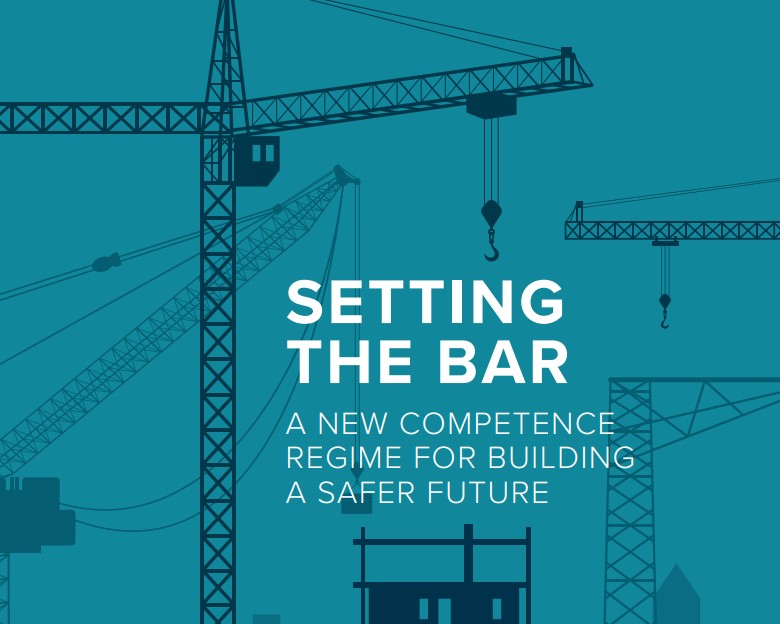Setting the Bar Final Report
Contents |
[edit] Introduction
Following the tragic Grenfell Tower fire, it became clear that change was needed. In August 2019, an interim report, 'Raising the Bar', was published by the Competence Steering Group (CSG), a cross industry body backed by Government, the Industry Safety Steering Group and Dame Judith Hackett and representing more than 150 organisations.
In October 2020, the final report, 'Setting the Bar: a new competence regime for building a safer future', was published. This provides a blueprint for improving the competence of those working on higher-risk buildings and driving culture change in the industry.
[edit] Competency standard
The CSG and its working groups collected feedback to develop sector and competence frameworks that set out the skills, knowledge, experience and behaviours needed to carry out specific roles and deliver a more rigorous approach to the essential training and assessment that is required.
The proposed system of competence in the report is made up of four key elements:
- A new competence committee sitting within the Building Safety Regulator.
- A national suite of competence standards – including new sector-specific frameworks developed by 12 working groups.
- Arrangements for independent assessment and reassessment against the competence standards.
- A mechanism to ensure that those assessing and certifying people against the standards have appropriate levels of oversight.
The CSG is recommending that all individuals whose work on higher-risk buildings is likely to materially affect safety outcomes, or who work unsupervised on these buildings, should meet the requirements set out in the competence frameworks.
[edit] Building Safety Manager requirements
Setting the Bar also presents the competence requirements for the new role of Building Safety Manager. Under legislation in the draft Building Safety Bill published in July 2020, the Accountable Person (deemed responsible for the safety of higher-risk buildings) will be required to appoint a Building Safety Manager who will look after the day-to-day management of fire and structural safety and establish a clear point of contact for residents for fire and safety related issues.
An in depth examination of the Building Safety Manager role is presented in a separate report, Safer people, safer homes: Building Safety Management. The report calls for the Building Safety Manager to retain the wider ‘holistic whole building’ obligations for occupiers’ safety and health, including public health considerations as well as those for fire and structural safety.
The skills, knowledge, experience and behaviours outlined in the report will be used by the British Standards Institute to develop a national standard that Building Safety Managers will be expected to meet.
[edit] Related articles on Designing Buildings Wiki
- Building a Safer Future.
- Building Safety Manager.
- Government response to the Building a Safer Future consultation.
- Grenfell Tower fire.
- Hackitt review of the building regulations and fire safety, final report.
- Raising the Bar Interim Report.
- What’s the best way into the industry?
[edit] External resources
Quick links
[edit] Legislation and standards
Fire Safety (England) Regulations 2022
Regulatory Reform (Fire Safety) Order 2005
Secondary legislation linked to the Building Safety Act
Building safety in Northern Ireland
[edit] Dutyholders and competencies
BSI Built Environment Competence Standards
Competence standards (PAS 8671, 8672, 8673)
Industry Competence Steering Group
[edit] Regulators
National Regulator of Construction Products
[edit] Fire safety
Independent Grenfell Tower Inquiry
[edit] Other pages
Building Safety Wiki is brought to you courtesy of:






Comments
Experience is one of the ways we build our competence as with learning. Why then is experience included in the definition of competence and not learning?
Remove this confusing non sequitur and simplify the definition of competence to something like:
"Applying the skills, knowledge and behaviours required to do a job well".